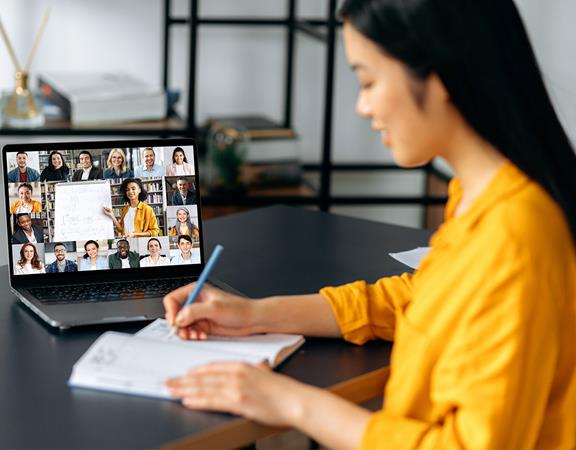
How Can HR Directors Help Development through Learning
Inside the Mind of the HRD on … Developing People
The development of people has always been essential for Top Employer organisations, but the Covid-19 pandemic served to move their learning journey even further up the agenda. Organisations that were dependant on classroom training quickly needed to develop a digital infrastructure for learning. And for employees there were challenges too, with many struggling to integrate learning effectively while working at home.
As some regions begin to emerge from the pandemic, it is obvious that there have been changes in the philosophy underpinning learning and development. These are that:
- Learning is happening everywhere. Employees are able to choose, not only, where and when they engage in learning activities but also through what medium learn in many places, at any time, and using any device they choose.
- Employees are more focused on experiences that matter to them. Employees are now, more than before, more able to take an active role in being able to choose their individual learning pathways. And both they and their employers know far more about the consequences of these choices because learning is increasingly quantifiable, shareable, and trackable.
Current Drivers: Six Opportunities
So how can HRDs seize on the opportunities that this creates? Here are six factors that shape their thinking:
- The Speed of Change. The rapidly changing situation worldwide has created noticeable disruption for many businesses, but it has also created new opportunities. To meet the world we business find themselves in they have made upskilling and reskilling of employees a top priority in 2021. New ways of work necessitate new skills, which must be delivered at a quicker pace than ever.
- Virtual Learning. The potential of new tools for learning is extremely exciting. AI and machine learning is now widely available, while augmented reality, gamification and simulations are also becoming integral to an employee feeling able to immerse themselves in their learning.
- Learning delivery methods. Personalisation is key to the delivery of effective development as employees enjoying playing more active roles in controlling their learning journey. Additionally, social learning is growing through the desire of learners to collaborate with one another. Finally, there is a much greater awareness of “learning pathways” – the journey of learning over the course of a career – as a means for employers to win and keep key talent.
- Mobile learning resources. As many employees are now learning on the move, HR must move with them. Around 40% of people use a smartphone to search for information, while 70% are more motivated to learn on their mobile device. We found that among our Top Employers, 83% have learning portals accessible from multiple devices.
- The ROI of L&D. It’s not an easy task for HR to measure the return on investment (ROI) for L&D but it has become a necessity for proving value. Among our Top Employers, 77% measure changes in their employee’s knowledge and capabilities, while 74% assess how learned skills turn into performance, and 53% gauge the contribution of learning to business performance. Performance data is everywhere, and it’s up to savvy HRD know to use it well.
- Role of the Classroom. Even in our current digitally focused time, classroom training still has a role to play. People will always want to come together in the same room to connect, argue, and problem-solve. It’s possible to build knowledge with online tools, but critical thinking and interpersonal skills are skills that are best learnt through to face-to-face discussion.
A glimpse of the future: A learning journey to 2030
These learning drivers present a big enough challenge for any HRD, but it’s important that they look even further ahead. What will people development look like by 2030? PwC’s “Workforce of the Future” sets out four scenarios for the future world of work. They are:
Humans First. In this scenario, there is:
- A strong loyalty to people, with individuals coming together for social learning.
- Training is conversational, interactive, and based on real scenarios.
Innovation Rules. In this world, there is:
- A premium put on ideas and skills that meet business and consumer needs, with specialised learning given a particularly high value.
- A commercial value on learning that takes precedence above everything else with, for example, a university degree less relevant than the right skills or experience.
Companies Care. This scenario is characterised by the:
- Development of virtual learning and networking, with the need for travel minimized.
- Investment in “green” skills, resulting in sustainable eco-friendly technologies in the workplace.
Corporate is King. In this world there is a:
- Small headcount of core talent, supported by a highly flexible bank of talent and skills where required.
- Relentless pressure to perform and improve competence among employees.
- A strong link between companies and education, with an attempt to engage promising youngsters.
- Of course, these four scenarios can overlap as they are not exclusive from one another.
Conclusion
The key point is that with people development available everywhere and in a form to suit the learner, it has effectively formed an ecosystem for both employer and employee. The organisation can harness the talents of the employee at every stage of their journey, while the employee learns in a way that makes sense to them as they develop their career. It is for each HRD to understand the challenges and opportunities for their organisation to help their own learning ecosystem flourish.